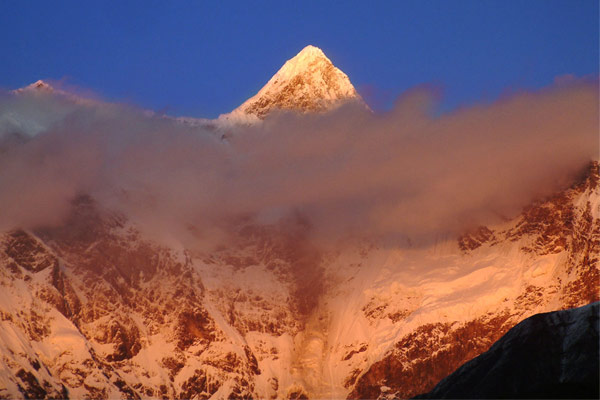
With an altitude of 25,531 feet (7,782m), the Namjiagbarwa ranks as world's 15th highest peak and 1st in China's ten most attractive mountains selected in the 2005 Chinese National Geography.
Namjagbarwa is a cloud-kissing peak. In Tibetan, it means 'a spear piercing into the sky' and is transliterated into Namjagbarwa. Surrounded by clouds and mists, the peak is well-known as a synonymous of mystery. It said that gods from heaven often meet on the peak and there are palaces and paths to heaven on it. Therefore, the peak is awesome and respectable for the locals and is appraised as the most beautiful mountain in China by a number of scientists, explorers and climbers.
Located at the Nyingchi area in the southeastern part of China's Tibet, the Namjiagbarwa is the world's highest peak in mountains with an altitude less than 8000 meters. The scenes on the peak vary from snowy winter to evergreen season.
On the top of the peak, it is snow-covered throughout the year. Beneath the snow-line, there are dark green alpine plants. Further down, clumps of bushes begin to appear and you can see trees with larger leaves, such as Banana tree, chrysalidocarpus and other tropical plants. The atmosphere around the peak is full of the specific muggy air of tropical rain forest. Because of great altitude, it has become such a good magician who can draw varied sights in one picture. No wonder Namjagbarwa is called a world natural museum of mountain vegetation forms.
